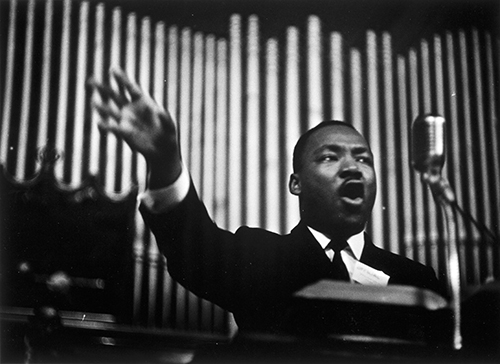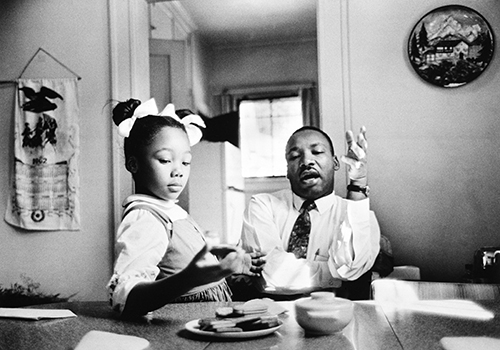
Today, as we witness the second inauguration of our first African American president, we will also celebrate the life and work of Dr. Martin Luther King, Jr. It has been thirty years since the federal holiday memorializing the great civil rights leader was first signed into law by President Ronald Reagan. For many people, this holiday means a day of service in honor of Dr. King’s legacy. For others, it is simply a time to reflect upon the significant changes his stalwart leadership helped to bring about during the Civil Rights Movement.
In addition to the annual celebration of King’s birth, 2013 also marks the 150th anniversary of the Emancipation Proclamation, and the 50th anniversary of the desegregation of South Carolina public schools. These landmark anniversaries are cause for both reflection and celebration. This winter at the Gibbes, we are showcasing an important collection of civil rights era photographs by acclaimed photographer James Karales. Engaged as a photo-journalist for Look magazine, Karales witnessed and documented many historic events during the Civil Rights Movement, and, in doing so, generated a remarkable body of work depicting Dr. Martin Luther King, Jr.

Karales traveled extensively with Dr. King in 1962 and 1963. He captured King alongside other significant civil rights leaders including Rev. Ralph Abernathy, Jackie Robinson, Rosa Parks, and Rev. C.T. Vivian. Many of the inspiring images depict King in familiar public roles—leading rallies at the Southern Christian Leadership Conference (SCLC) conventions in Birmingham, and preaching sermons at Ebenezer Baptist Church in Atlanta. However, Karales was one of a handful of photographers allowed to document King at home. These rare images of King in private moments with his family at their Atlanta home are equally compelling. Most notable may be the photograph of King sitting with his daughter, Yolanda, at the kitchen table. Published in the February 12, 1963, issue of Look, the caption described that King was trying to explain to his daughter why she could not attend the city’s segregated amusement park. King’s daughter listens quietly, but the inexplicability of racial intolerance is evident in the exchange between the father and his young daughter, and this poignant moment is still palpable in Karales’ photograph today.
As we celebrate these landmark anniversaries we invite you to the Gibbes to reflect upon the people and events that made them possible. Witness to History: Civil Rights Era Photographs by James Karales will be on view at the Gibbes through May 12, 2013.
—Sara Arnold, Curator of Collections, Gibbes Museum of Art
Published January 21, 2013

